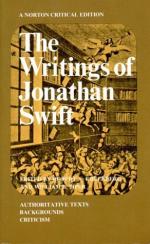“K. Charles 2d. 1660 granted a patent for coining only farthings for the kingdom of Ireland to Coll. Armstrong: But I do not find he ever made any use of it.[A] For all our copper and brass money to the year 1680 was issued by private persons, who obtained particular licences, on giving security to change their half-pence and farthings for gold and silver; but some of their securities failing, others pretending the half-pence which were tendered to be changed were counterfeits, the public always suffered. Col. Armstrong’s son, finding great profit was made by coining half-pence in Ireland, by virtue of particular licences recallable at pleasure, solicited and obtained a patent in the name of George Legg afterwards Lord Dartmouth, for coining half-pence for Ireland from 1680, for 21 years, he giving security to exchange them for gold or silver on demand.[B] In pursuance of this he coined considerable quantities of half-pence for four years; but in 1685 [John] Knox, with the consent of Armstrong, got the remaining part of this term granted by patent in his own name, he giving security as above, and got his half-pence declared the current coin of Ireland, notwithstanding two Acts of Parliament had enacted that they should not be received in the revenue. Knox was interrupted in his coinage in 1689, by King James’s taking it into his own hands, to coin his famous brass money, of which he coined no less than L965,375, three penny worth of metal passing for L10 ster. In this money creditors were obliged to receive their debts, and by this cruel stratagem Ireland lost about L60,000 per month. This not only made our gold and silver, but even our half-pence to disappear; which obliged King William to coin pewter half-pence for the use of his army....
[Footnote A: Monck Mason, quoting Simon “On Irish Coins” (Append., No. LXV), says: “Sir Thomas [Armstrong] was never admitted to make use of this grant, nor could he obtain allowance of the chief governor of Ireland, to issue them as royal coin among the subjects of that kingdom.”]
[Footnote B: “A proclamation was issued by the lord lieutenant, declaring these half-pence to be the current coin of the kingdom, but it provided that none should be enforced to take more than five shillings in the payment of one hundred pounds, and so proportionately in all greater and lesser sums.... This patent was granted, by and with, the advice of James, Duke of Ormond” (Monck Mason, “History of St. Patrick’s,” p. 334, note y).]
“After the Revolution, Col. Roger Moore being possessed of Knox’s patent, commenced his coinage in Dublin, and at first kept several offices for changing his half-pence for gold or silver. He soon overstocked the kingdom so with copper money, that persons were obliged to receive large sums in it; for the officers of the crown were industrious dispensers of it, for which he allowed them a premium. It was common at that time for one to compound for




